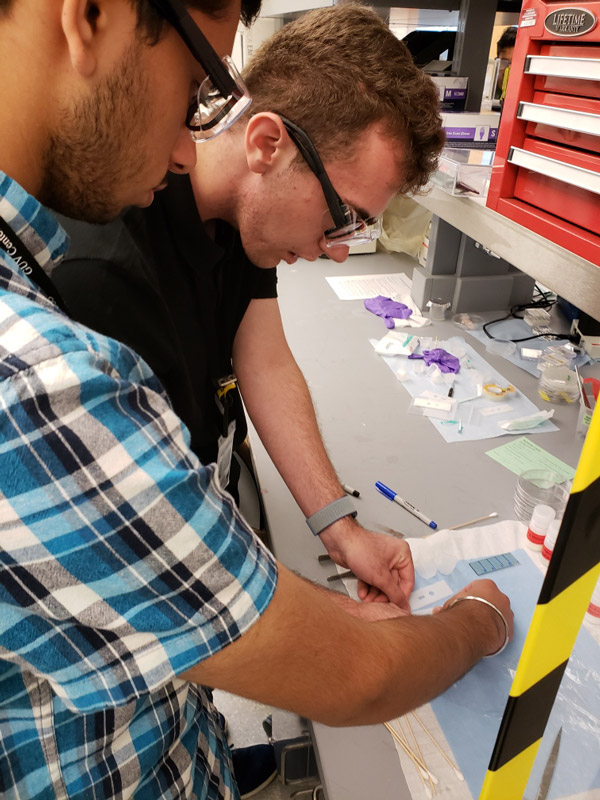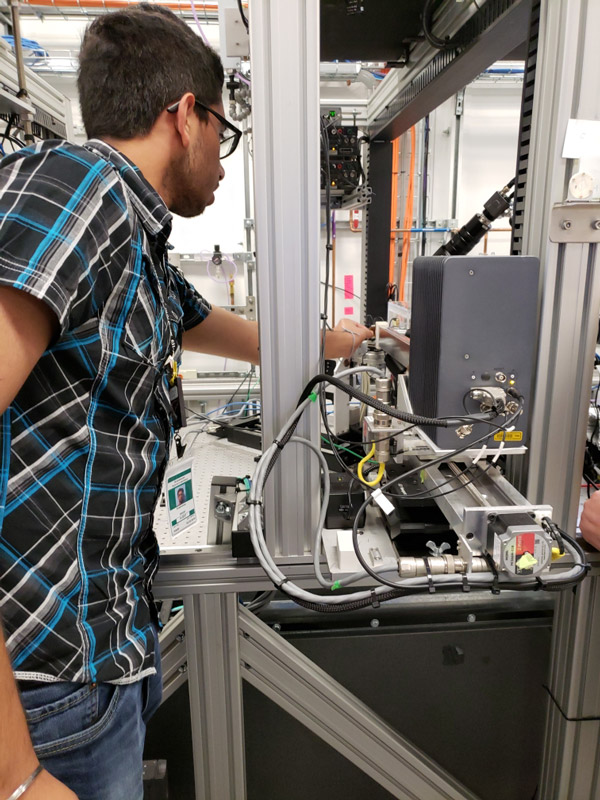Summer vacation might be underway, but Huntington High School senior research program teacher Dame Forbes and incoming seniors Ryan Hoffmann and Arashdeep Singh aren’t about to just drop all of their educational interests and pursuits. The trio recently underwent advanced level training at Brookhaven National Lab’s National Synchrotron Light Source II facility.
The NSLS-II is one of the newest and most advanced synchrotron facilities in the world. Users have the ability to study materials with some of the most sophisticated x-ray imaging and high resolution capable equipment available. Having finished construction in 2014, thousands of scientists from all levels of research and academia use the facility annually, including students on the high school level.

Huntington science teacher Dame Forbes.
With an original price tag of $913 million, the National Synchrotron Light Source II currently has about 28 beamlines (experimental stations) with each serving a different purpose and most costing $15 million each and $15,000 per day to operate.
During the first days of the summer break, the Huntington High School student-teacher team ventured to the lab daily in an effort to learn more about the facility and how to make proper use of it for possible future research projects.
The Huntington contingent learned all about x-ray absorption, microscopy, imaging and diffraction from scientists who assist researchers and corporations on a daily basis, in addition to designers of the machine and beamlines themselves.
“This was an amazing experience,” Mr. Hoffmann said. “Going into the week I knew only the basics about synchrotrons, but I came away confident in my ability to prepare samples for scanning and collecting and interpreting data just as the scientists there do.”
The week started with lectures about the machine itself along with an overview of x-rays and their effect on molecules, but quickly ramped up with hands-on demonstrations and activities where the students and teachers prepared samples for the synchrotron in a lab. Then with guidance from BNL scientists, participants ran the submicron resolution x-ray spectroscopy beamline (SRX) to collect data on the composition of a sample of pumice which NASA had sent to the lab due to its strong resemblance to Mars rocks.
“As a trained user at this facility we really have just opened up new research opportunities for the students in the district,” Mrs. Forbes said. “This partnership is invaluable and we are so fortunate to have this facility in our area for use. I’m looking forward to a successful partnership with the lab.”
As the week drew to a close the group learned how to analyze data using programs such as Athena, PyXRF, and IDL to interpret not only what elements were in the samples, but what compounds made up extremely tiny sections and even what form of each element was in the sample.
“I really enjoyed spending my time at the NSLS-II,” Mr. Singh said. “In one short week, I was able to learn a lot about how scientists are able to analyze different samples. I look forward to doing the same with our own research idea. A special thanks to Mrs. Forbes and everyone in the district who made this experience possible. It was a great opportunity that has opened many new doors.”
The team now has the summer task of brainstorming project ideas and later submitting one to laboratory scientists to earn beamtime in order to perform an experiment in the winter or summer months.



